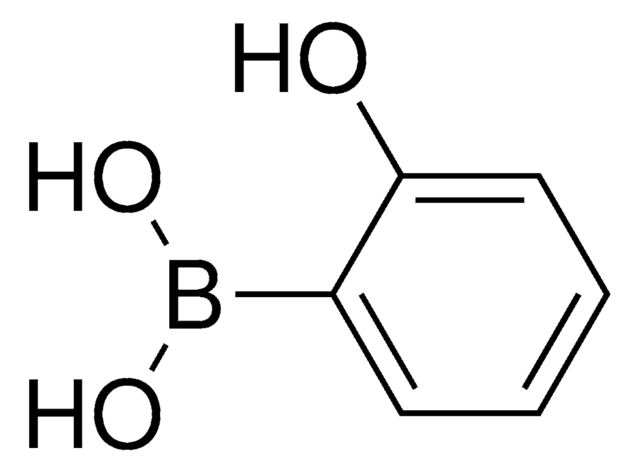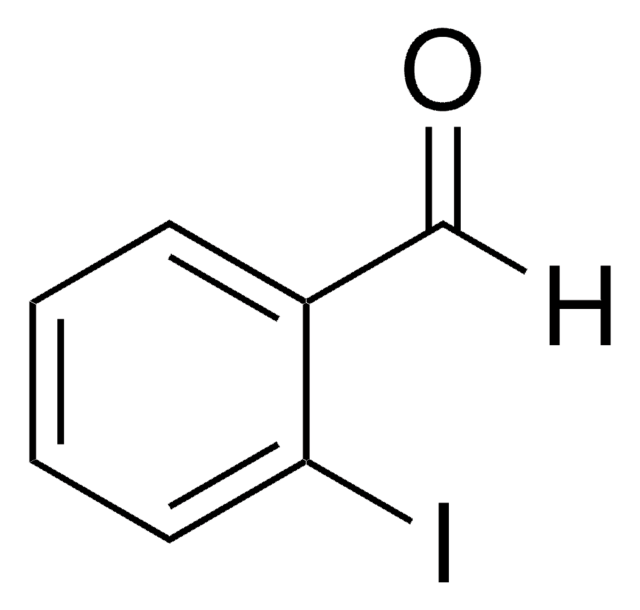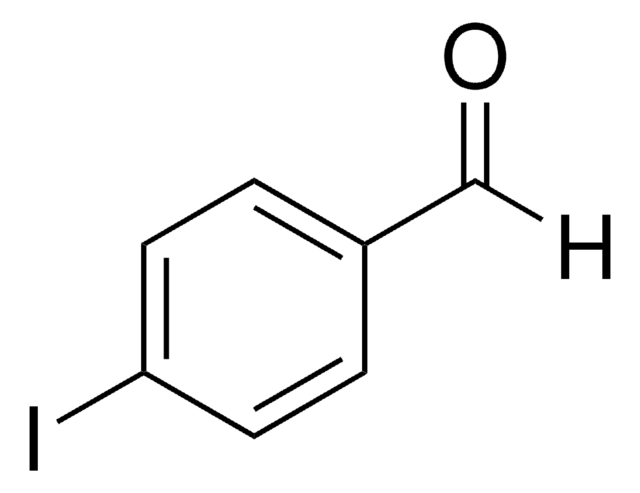If this product has an expiration or retest date, it will be shown on the Certificate of Analysis (COA, CofA). If there is no retest or expiration date listed on the product's COA, we do not have suitable stability data to determine a shelf life. For these products, the only date on the COA will be the release date; a retest, expiration, or use-by-date will not be displayed.
For all products, we recommend handling per defined conditions as printed in our product literature and website product descriptions. We recommend that products should be routinely inspected by customers to ensure they perform as expected.
For products without retest or expiration dates, our standard warranty of 1 year from the date of shipment is applicable.
For more information, please refer to the Product Dating Information document: https://www.sigmaaldrich.com/deepweb/assets/sigmaaldrich/marketing/global/documents/449/386/product-dating-information-mk.pdf
Kluczowe dokumenty
B57001
2-Bromobenzaldehyde
98%
Synonim(y):
2-Formylbromobenzene
Wybierz wielkość
285,00 zł
Wybierz wielkość
About This Item
285,00 zł
Polecane produkty
Poziom jakości
Próba
98%
Formularz
liquid
współczynnik refrakcji
n20/D 1.595 (lit.)
bp
230 °C (lit.)
mp
16-19 °C (lit.)
gęstość
1.585 g/mL at 25 °C (lit.)
ciąg SMILES
Brc1ccccc1C=O
InChI
1S/C7H5BrO/c8-7-4-2-1-3-6(7)5-9/h1-5H
Klucz InChI
NDOPHXWIAZIXPR-UHFFFAOYSA-N
Szukasz podobnych produktów? Odwiedź Przewodnik dotyczący porównywania produktów
Opis ogólny
Zastosowanie
- Synthesis of aza-fused polycyclic quinolines through copper-catalyzed cascade reaction.[2]
- Preparation of 1-substituted indazoles by CuI-catalyzed coupling with N-aryl hydrazides.[3]
- It is a key starting material in the total synthesis of an anticancer agent, (-)-taxol.[4]
- Palladium/copper-catalyzed coupling and cyclization of terminal acetylenes derived from 2-bromobenzaldehyde and unsaturated imines can be used in the synthesis of wide range of isoquinolines, including decumbenine B.[5]
- Fluoren-9-ones can be synthesized by annulation of arynes, generated in situ from 2-(trimethylsilyl)aryl triflates, with 2-bromobenzaldehyde in the presence of palladium(0) catalyst.[6]
- It can also be used to build a variety of steroid frameworks, in which ring A is derived from 2-bromobenzaldehyde.[7]
Hasło ostrzegawcze
Warning
Zwroty wskazujące rodzaj zagrożenia
Zwroty wskazujące środki ostrożności
Klasyfikacja zagrożeń
Eye Irrit. 2 - Skin Irrit. 2 - STOT SE 3
Organy docelowe
Respiratory system
Kod klasy składowania
10 - Combustible liquids
Klasa zagrożenia wodnego (WGK)
WGK 3
Temperatura zapłonu (°F)
203.0 °F - closed cup
Temperatura zapłonu (°C)
95 °C - closed cup
Środki ochrony indywidualnej
Eyeshields, Gloves, type ABEK (EN14387) respirator filter
Wybierz jedną z najnowszych wersji:
Certyfikaty analizy (CoA)
Nie widzisz odpowiedniej wersji?
Jeśli potrzebujesz konkretnej wersji, możesz wyszukać konkretny certyfikat według numeru partii lub serii.
Masz już ten produkt?
Dokumenty związane z niedawno zakupionymi produktami zostały zamieszczone w Bibliotece dokumentów.
Klienci oglądali również te produkty
-
How can I determine the shelf life / expiration / retest date of this product?
1 answer-
Helpful?
-
-
How is shipping temperature determined? And how is it related to the product storage temperature?
1 answer-
Products may be shipped at a different temperature than the recommended long-term storage temperature. If the product quality is sensitive to short-term exposure to conditions other than the recommended long-term storage, it will be shipped on wet or dry-ice. If the product quality is NOT affected by short-term exposure to conditions other than the recommended long-term storage, it will be shipped at ambient temperature. As shipping routes are configured for minimum transit times, shipping at ambient temperature helps control shipping costs for our customers. For more information, please refer to the Storage and Transport Conditions document: https://www.sigmaaldrich.com/deepweb/assets/sigmaaldrich/marketing/global/documents/316/622/storage-transport-conditions-mk.pdf
Helpful?
-
Active Filters
Nasz zespół naukowców ma doświadczenie we wszystkich obszarach badań, w tym w naukach przyrodniczych, materiałoznawstwie, syntezie chemicznej, chromatografii, analityce i wielu innych dziedzinach.
Skontaktuj się z zespołem ds. pomocy technicznej











